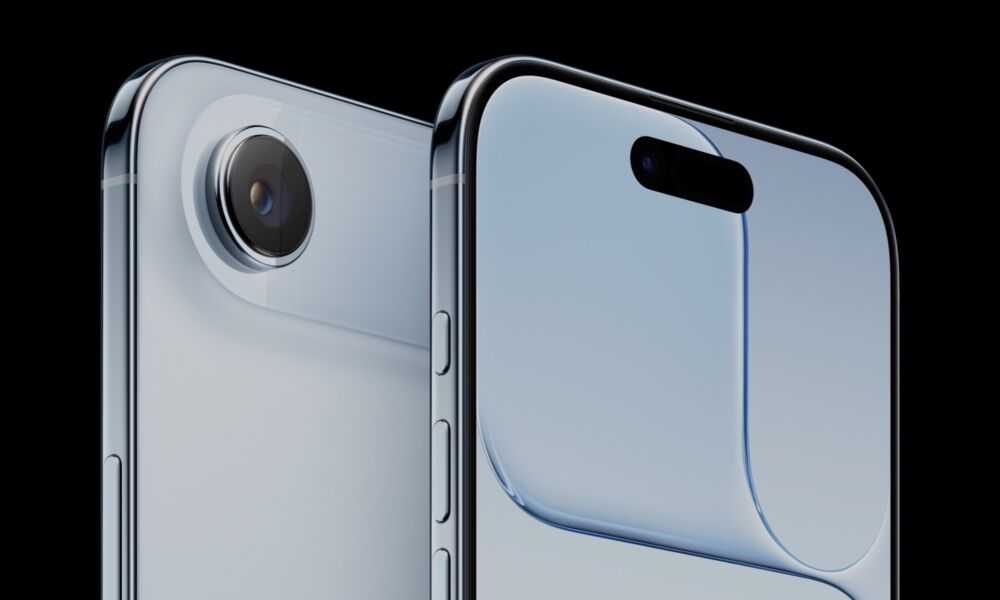iPhone 18 Lineup May Get 24 MP Selfie Cameras — With a Catch

Toggle Dark Mode
One of the earliest rumors about this year’s iPhone 17 models suggested that Apple would increase the front camera to 24 megapixels. That didn’t happen — at least not officially. However, a new analyst report hints that this could arrive with next year’s iPhone 18 lineup instead, which may also include Apple’s long-awaited “iPhone Fold.”
The first reports of a 24 MP selfie camera for the iPhone 17 showed up in August 2024, when analyst Jeff Pu first pointed to a 24 MP sensor in Apple’s supply chain — a month before the iPhone 16 lineup debuted. It was one of those very early rumors that we’d normally have taken with a massive dose of salt, had it not been for the fact that it was corroborated by several other reputable analysts and leakers.
Since almost all of these reports came from Apple’s supply chain, it’s possible they were merely reading too far ahead — that the 24 MP camera was slated for the 2026 models, and analysts had merely jumped the gun on assuming they’d arrive in this year’s lineup. This aligns with a new report from JP Morgan recently shared by MacRumors.
According to JP Morgan’s research team, Apple will equip all of its flagship 2026 models with a 24 MP front-facing camera. While it’s unclear what “flagship” means in this context, it will almost certainly include the iPhone 18 Pro and iPhone 18 Pro Max and — if the rumors are true — Apple’s first foldable that’s expected to debut next year.
However, while the rear cameras on Apple’s iPhones are often distinguished between the standard and pro lineups, the front camera specs have always been identical. This makes it likely the iPhone 18 and “iPhone Air 2” will also get the same 24 MP front sensor, and we wouldn’t be surprised to see it come to an “iPhone 18e” in early 2027.
That said, it’s also possible that last year’s analyst reports on the iPhone 17 24 MP sensor weren’t entirely wrong, but made the mistake of focusing on the hardware component rather than the advertised capabilities — a mistake that would be quite understandable for a report from Apple’s supply chain, where analysts know what is going into a new iPhone, but don’t necessarily understand how it will be used.
To understand where the confusion may have come from, we need to take a closer look at the sensor Apple actually introduced this year.
How Apple’s Square Sensor Explains the Confusion
When Apple unveiled its new iPhone lineup this year, it highlighted one of the biggest changes to the front-facing camera since the introduction of Face ID: a new square sensor capable of capturing 18 MP images in both portrait and landscape orientations without rotating the iPhone.
Since iPhone selfies aren’t square — they use a 4:3 aspect ratio — the full sensor area isn’t used for any single image. Instead, Apple uses the full 4896 pixels in width but only 3672 in height, yielding an active area of 4896 × 3672 — 18 million pixels — and leaving 1224 pixels above and below effectively unused.
However, since the sensor is square, that means the resolution is 4896 x 4896, which equals 23,970,816 pixels, or 24 megapixels.
In other words, the iPhone 17 lineup already has a 24 MP sensor — it’s just that there’s no way to get the full 24 million pixels out of it.
Apple lists the camera as 18 MP because that’s the resolution of the image it actually captures — not the size of the sensor itself. The unused pixels serve as extra headroom for cropping, orientation shifts, and potentially even future Center Stage-style framing tricks.
This raises the question as to whether the JP Morgan report is sharing anything new here. Are they just reading the same tea leaves that Jeff Pu did in last August’s report, with supply chain sources pointing to a 24-megapixel hardware component, or does Apple plan to boost the usable resolution of the sensor?
If that’s true, Apple would actually need to move to a square 32-megapixel sensor to maintain the same Center Stage feature it introduced this year — which it undoubtedly would. That makes us skeptical of JP Morgan’s report, which is likely still based on supply-chain inference. Perhaps its analysts did the math but neglected to mention the larger 32 MP component; either way, this one’s best taken with a healthy dose of skepticism until we hear more.
[The information provided in this article has NOT been confirmed by Apple and may be speculation. Provided details may not be factual. Take all rumors, tech or otherwise, with a grain of salt.]








